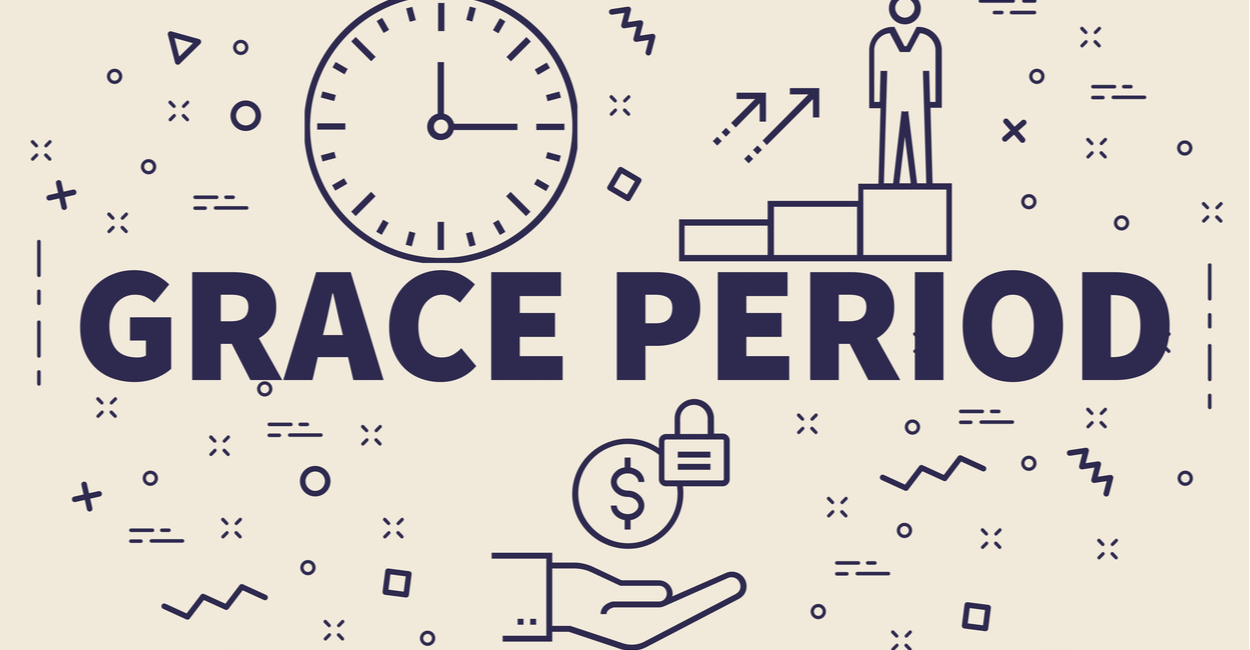Home>Finance>How Do You Know If You Have A Credit Card Grace Period?


Finance
How Do You Know If You Have A Credit Card Grace Period?
Published: February 20, 2024
Learn how to determine if you have a credit card grace period and manage your finances wisely. Understand the importance of understanding credit card terms.
(Many of the links in this article redirect to a specific reviewed product. Your purchase of these products through affiliate links helps to generate commission for LiveWell, at no extra cost. Learn more)
Table of Contents
Introduction
Understanding the nuances of credit card terms can be a daunting task, especially when it comes to deciphering the presence of a credit card grace period. This crucial aspect of credit card ownership can significantly impact your financial well-being, making it essential to grasp its implications. In this comprehensive guide, we will delve into the intricacies of credit card grace periods, empowering you to navigate the financial landscape with confidence and clarity.
A credit card grace period is a window of time during which you can pay your credit card balance without incurring any interest. This period typically spans from the end of a billing cycle to the payment due date. However, not all credit cards offer this benefit, and the presence of a grace period largely depends on the specific terms and conditions of your credit card agreement.
By shedding light on the criteria for determining the existence of a credit card grace period, this article aims to equip you with the knowledge necessary to make informed financial decisions. Whether you're a seasoned credit card user or are considering obtaining your first card, understanding the nuances of grace periods is paramount for managing your finances effectively.
Join us as we demystify the concept of credit card grace periods, providing you with valuable insights that can bolster your financial literacy and empower you to make sound financial choices. Let's embark on this enlightening journey to unravel the mysteries of credit card grace periods and gain a deeper understanding of their impact on your financial well-being.
What is a Credit Card Grace Period?
A credit card grace period is a valuable feature that allows cardholders to make purchases without incurring interest charges if the outstanding balance is paid in full by the due date. This period typically ranges from 21 to 25 days, providing a window of opportunity for responsible borrowers to repay their balances without accruing additional costs. It serves as a buffer between the end of a billing cycle and the due date for the subsequent payment, offering cardholders a brief respite from interest charges if they settle their balances within this timeframe.
During the grace period, any new purchases made on the credit card may not accrue interest if the previous statement balance has been fully paid. This feature can be particularly advantageous for individuals seeking to manage their cash flow effectively while leveraging the convenience and benefits of credit card usage.
It’s important to note that not all credit cards offer a grace period, and the specific terms and conditions governing this benefit can vary among different issuers and card products. Some credit cards, especially those designed for individuals with limited or poor credit histories, may not provide a grace period, meaning that interest begins to accrue immediately on new purchases.
Understanding the presence and duration of the grace period associated with your credit card is crucial for making informed financial decisions. By leveraging this feature effectively, you can optimize your cash flow, minimize interest expenses, and maintain a healthy credit profile. In the subsequent sections, we will explore the methods for determining whether your credit card offers a grace period and the significance of comprehending the terms and conditions associated with this essential aspect of credit card ownership.
How to Determine if You Have a Credit Card Grace Period
Determining whether your credit card includes a grace period necessitates a thorough review of the terms and conditions outlined in the cardholder agreement. This document, provided by the credit card issuer, delineates the specific features, fees, and regulations governing the use of the credit card. To ascertain the presence of a grace period, consider the following steps:
- Review the Cardholder Agreement: Carefully examine the cardholder agreement provided by the credit card issuer. Look for sections or clauses related to the billing cycle, payment due dates, and the accrual of interest. The presence of a grace period and its duration is typically outlined in this document.
- Consult Customer Service: If the cardholder agreement does not explicitly specify the presence or duration of a grace period, consider reaching out to the credit card issuer’s customer service department. A representative can provide clarification on the grace period policy associated with your credit card.
- Online Account Management: Access your credit card account through the issuer’s online portal or mobile app. Navigate to the section displaying your account details and review the information related to billing cycles, due dates, and interest charges. This can offer insights into the presence of a grace period and its associated terms.
By diligently exploring these avenues, you can gain a comprehensive understanding of whether your credit card incorporates a grace period. It’s important to note that the absence of a grace period does not imply that timely payments are unnecessary. Regardless of the presence of this feature, prompt payment of the outstanding balance is crucial for maintaining a positive credit history and avoiding late fees.
Armed with this knowledge, you can make informed decisions regarding your credit card usage, capitalizing on the benefits of a grace period if it is available and adopting prudent financial practices to safeguard your financial well-being.
Understanding the Terms and Conditions of Your Credit Card
Comprehending the terms and conditions of your credit card is paramount for wielding this financial tool responsibly and maximizing its benefits. The following key aspects should be carefully considered and understood:
- Annual Percentage Rate (APR): The APR represents the annualized interest rate applied to outstanding balances. Understanding the APR is crucial for assessing the cost of borrowing and making informed decisions regarding credit card usage.
- Grace Period: If your credit card includes a grace period, familiarize yourself with its duration and the specific conditions governing its application. This knowledge empowers you to leverage the grace period effectively to avoid interest charges on new purchases.
- Minimum Payment: The minimum amount you must pay by the due date to maintain your account in good standing. It’s essential to understand the implications of making only the minimum payment, as it can lead to prolonged debt and increased interest costs.
- Transaction Fees: Review the fees associated with cash advances, balance transfers, and foreign transactions. Being aware of these charges enables you to assess the cost-effectiveness of various credit card transactions.
- Rewards and Benefits: If your credit card offers rewards, such as cash back, points, or travel benefits, familiarize yourself with the earning structure, redemption options, and any limitations or expiration dates associated with these rewards.
- Penalties and Fees: Gain clarity on the potential penalties for late payments, exceeding the credit limit, or other infractions. Understanding these consequences helps you avoid unnecessary fees and safeguards your credit standing.
By delving into the intricacies of your credit card’s terms and conditions, you can make informed decisions aligned with your financial goals and lifestyle. Additionally, staying abreast of any updates or amendments to the terms and conditions issued by the credit card issuer is essential for maintaining a proactive approach to managing your credit card account.
Empowered with a comprehensive understanding of the terms and conditions, you can navigate the credit card landscape with confidence, optimizing the benefits while mitigating potential pitfalls. This knowledge equips you to wield your credit card as a valuable financial tool, facilitating seamless transactions, building creditworthiness, and unlocking rewards that enhance your financial well-being.
Conclusion
Embarking on a journey to unravel the complexities of credit card grace periods has provided valuable insights into managing this ubiquitous financial tool effectively. By comprehending the nuances of credit card grace periods and the associated terms and conditions, you are empowered to make informed decisions that align with your financial goals and priorities.
Understanding whether your credit card offers a grace period and the specific conditions governing its application is pivotal for optimizing your financial management strategies. Leveraging this feature effectively can help you avoid unnecessary interest charges on new purchases, contributing to improved cash flow and financial flexibility.
Moreover, delving into the broader terms and conditions of your credit card equips you with the knowledge necessary to navigate the intricacies of credit card usage. By familiarizing yourself with the APR, minimum payment requirements, transaction fees, rewards, and potential penalties, you can wield your credit card as a valuable financial instrument while safeguarding your financial well-being.
As you continue your financial journey, remember that responsible credit card usage extends beyond the presence of a grace period. Timely payments, prudent spending habits, and proactive management of your credit card account are essential elements of maintaining a healthy financial profile. By staying informed and proactive, you can harness the benefits of credit card ownership while mitigating potential risks and pitfalls.
Armed with the knowledge gleaned from this exploration, you are poised to navigate the realm of credit card grace periods and terms with confidence and clarity. By integrating these insights into your financial decision-making processes, you can harness the power of credit cards as a tool for financial empowerment and responsible money management.
As you apply these insights to your financial endeavors, may you embark on a path marked by informed choices, prudent financial management, and the attainment of your long-term financial aspirations.














